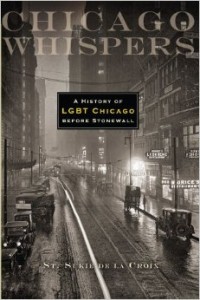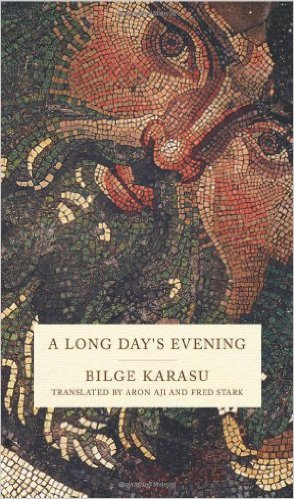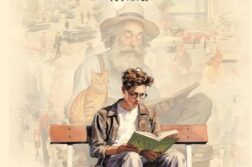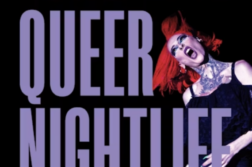 Chicago Whispers: A History of LGBT Chicago Before Stonewall
Chicago Whispers: A History of LGBT Chicago Before Stonewall
by St. Sukie de la Croix
U. of Wisconsin. 326 pages, $29.95
Journalist St. Sukie de la Croix, who arrived in the U. S. from Great Britain in 1991, brings an outsider’s perspective and sense of wonder to this seriously researched but eminently readable work. The author’s decision to include in Chicago Whispers a number of GLBT individuals who may have worked or lived in the Chicago area for part of their lives, but who were not known to be Chicagoans, may be controversial. Included, for instance, are Carl van Vechten, who graduated from the University of Chicago and spent the first couple of years of his working life there, but made his mark in New York; and Ethel Waters, who “honed her skills in South Side clubs,” where she made her singing debut, but later settled in New York. Far from being a cut-and-dried chronology, Chicago Whispers is a century-by-century excavation (up to the time of Stonewall) of all things GLBT in Chicago, dating from the 16th century when “French Jesuit explorers wrote in their journals of the existence of ‘feminine men’ among a [Native American] tribe.” Topics and individuals who receive greater or lesser recognition include several 19th-century physicians who wrote extensively on “sexual perversion”; Margaret Anderson and her Little Review in the 1920s; Henry Gerber (who founded the first gay rights group in Chicago in 1924); lawyer Pearl Hart, who never came out but was famed for her oratorical skills. There’s a lot of entertaining information about clubs, music, neighborhoods, and performers. There is some repetition, however, and, due to the highly unusual arrangement of chapter notes, it is often impossible to decipher the source of cited information. These reservations aside, Chicago Whispers makes for an enjoyable addition to GLBT American history.
by Maurice Gold
 Secrets and Strangers
Secrets and Strangers
by James Gilbert
James Gilbert. 138 pages, $7.95
The opening stories in Secrets and Strangers are set in Europe—the south of France, the Italian lakes—and deal with the relationship between a man and a woman. In “Dinner Under a Striped Awning,” we see them deciding, almost spontaneously, to get married. In the title story we learn of the strain the man’s insistence on remaining in the closet has put on the marriage. Later, we go back to his childhood in the Midwest, and relationships with parents, relatives, and family legends. The best story, “Animal Snap,” dramatizes a day in high school when the protagonist is not only told by his teachers that he needs speech therapy for a lisp but is then reprimanded by his father for using a word he considers effeminate. Moving back and forth in time and space, these snapshots of a man at various points in his life describe someone moving from conventional expectations to the difficulties of gay life. Though several stories end in mid-air with no emotional climax, all of them are written in a graceful style that excels in giving us a sense of place, whether it’s the Riviera or Illinois. Taken together, they amount to a life, whose pivot—in “Animal Snap”—seems to be that awful moment in a gay man’s childhood when he realizes he is not the boy he’s supposed to be, and there seems to be nothing else to do but to “will his own disappearance.”
by Andrew Holleran
 A Long Day’s Evening
A Long Day’s Evening
by Bilge Karasu
Translated by Aron Aji and Fred Stark
City Lights. 162 pages, $13.95
This unusual novel tells the story of two Byzantine monks during the controversy over icons. Andronikos flees his monastery after learning of the Emperor’s order that all religious icons, venerated by both the religious hierarchy and laypeople for centuries, are to be confiscated and burned. Unsure of what to believe and afraid of swearing an oath renouncing icons as the Emperor requires, he escapes to an uninhabited island, reflecting on his monastic life and his friendship with Ioakim, with whom he discusses this pressing issue. A serious and intense young man, Andronikos cannot reconcile centuries of traditional worship with the recent imperial edict that icons are blasphemous, and Ioakim can give him no advice on resolving his inner struggle. Eventually, removed from civilization, he gains insight into his beliefs on what is right and finds the courage to face the consequences of his actions. The novel then shifts many years later to Ioakim, now an elderly abbot, on a pilgrimage to Rome. As he walks among the ruins of a once-mighty empire, he remembers the fate of his friend Andronikos, recalling the strange punishment his friend endured for refusing the edict. Ioakim witnessed this suffering firsthand, which harks back to an earlier incident with a fox he rescued and raised as a pet, until it grew ill. Long suppressed over the years, these tragic events finally return to his mind during his travels, and he must confront his guilt. While the gradual building of revelations may raise suspicions about Andronikos and Ioakim’s relationship, it is strictly platonic; indeed, Andronikos remarks that he gave up thinking of such physical matters long ago. The novel gives a vivid glimpse into a little-known period gripped by religious controversy.
by Charles Green
 My Big Gay Italian Wedding
My Big Gay Italian Wedding
Written by Anthony J. Wilkinson
Directed by Sonia Blangiardo
St. Luke’s Theatre, New York
In the best tradition of “hey gang, let’s put on a show,” the current (updated) version of this fast-paced farce is set in one of the outer boroughs in the days just after New York legalized same-sex marriage. It premiered in 2003, with a slightly different plot; played at St. Luke’s Theatre for 16 months beginning in mid-2010; and was produced at the Edinburgh Fringe in 2011. Andrew and Anthony (a mixed couple: the former is Polish, the latter Italian) meet, fall in love at a karaoke bar, and decide to marry. Pitfalls await, but in no time Anthony’s parents come around (however much they read like stereotypes from All in the Family); his supportive, crazy, and stage-struck sister can’t wait to sing at his wedding; and Andrew’s old flame Justin starts to stir up trouble. Anthony’s friends, all of whom are gay and lesbian, are each other’s best friends, despite their bickering, and it’s refreshing to see a portrayal of young lesbians who don’t fit into any particular mold. The fiercest of the group, the “mother hen,” is called in at the last moment to pass as Andrew’s (estranged) mother, who lives in Florida. Anthony’s mother demands that the parish priest bless the couple. He sincerely regrets that it isn’t allowed, and in a very amusing scene he’s offered—in vain—a box of cannoli as a bribe. Despite that obstacle, the wedding itself, officiated by a wedding planner who’d providentially received his ministerial degree (thanks to the magic of the Internet) takes place in Act II. Newly devised chicken dances are danced; wigs fly; and two cast members with great voices take their solo turns. Although one wishes the couple well, a subsequent show, a comedy, might be titled “My Big Gay Divorce, Italian Style.”
by Martha E. Stone
“The Beatles”
by AG
Universal Republic
Whoever said you’ve got to hide your love away? John Lennon and Paul McCartney,
of course, and with “The Beatles,” out lesbian AG puts her own spin on six songs by the Fab Four. With eight albums of her own under her belt, AG (formerly of The Rescues) proves that songs like “I Wanna Be Your Man” and “She Loves You” are not just timeless but genderless. The video for the former classic features AG (formerly Adrianne Gonzalez) transformed from a
tattooed rocker chick into a mustachioed man in two minutes flat. The standout is “There’s a Place,” where AG dispenses with the original harmonica in lieu of a more
rueful, piano-driven sound. The sparser “She Loves You” and “Misery”—the first Beatles song to be covered back in 1963—are no less tender. The whole collection lasts less than fifteen minutes, but it’s well worth it: put it on and let it be.
by Colin Carman






